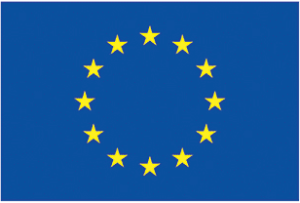First confirmed cases of Avian Influenza in the Antarctic region
Highly Pathogenic Avian Influenza (HPAI) has been confirmed in brown skua populations on Bird Island, South Georgia – the first known cases in the Antarctic region.
Following reports of several potentially symptomatic birds and unexplained mortality, British Antarctic Survey (BAS) staff on Bird Island took samples for testing. The swabs were returned to the UK and tested by the Animal and Plant Health Agency laboratories in Weybridge, where they returned positive results for HPAI H5N1.
Natural pathways are the primary means of spread of HPAI and it is likely that the spread of the disease was caused by the return of birds from their migration to South America, where there are a high number of HPAI cases. BAS and Government of South Georgia & the South Sandwich Islands (GSGSSI) remain vigilant for further cases and science and visitor programmes are currently continuing under enhanced biosecurity measures.
BAS is working in close partnership with the GSGSSI, guided by their tiered response plan to monitor and manage the outbreak. The most recent version of these protocols can be found in the GSGSSI Biosecurity Handbook.
BAS operates two research stations on South Georgia, including one at Bird Island where the confirmed cases were identified. As result of the confirmed cases of HPAI, the majority of field work involving animal handling has been suspended. Biosecurity measures continue, including the enhanced cleaning of clothing and field equipment, and observation of areas of high wildlife density.
Key elements of the wider science programme at Bird Island continue under caution, including long-term monitoring of marine predators such as wandering, black-browed and grey-headed albatrosses, northern and southern giant petrels, macaroni penguins, and gentoo penguins. These observations make Bird Island one of the most closely monitored seabird colonies in the world, equipping scientists and conservationists with indicators of change for species.
It is not possible to forecast the impacts of HPAI across South Georgia, given that the patterns of transmission and mortality in Europe and the Americas space has been highly variable. GSGSSI and BAS will continue to work together to monitor the impact of the wildlife at Bird Island, and the potential spread to other areas.
Natural pathways are the primary means of spread of HPAI and it is likely that the spread of the disease was caused by the return of birds from their migration to South America, where there are a high number of HPAI cases. BAS and Government of South Georgia & the South Sandwich Islands (GSGSSI) remain vigilant for further cases and science and visitor programmes are currently continuing under enhanced biosecurity measures.
BAS is working in close partnership with the GSGSSI, guided by their tiered response plan to monitor and manage the outbreak. The most recent version of these protocols can be found in the GSGSSI Biosecurity Handbook.
BAS operates two research stations on South Georgia, including one at Bird Island where the confirmed cases were identified. As result of the confirmed cases of HPAI, the majority of field work involving animal handling has been suspended. Biosecurity measures continue, including the enhanced cleaning of clothing and field equipment, and observation of areas of high wildlife density.
Key elements of the wider science programme at Bird Island continue under caution, including long-term monitoring of marine predators such as wandering, black-browed and grey-headed albatrosses, northern and southern giant petrels, macaroni penguins, and gentoo penguins. These observations make Bird Island one of the most closely monitored seabird colonies in the world, equipping scientists and conservationists with indicators of change for species.
It is not possible to forecast the impacts of HPAI across South Georgia, given that the patterns of transmission and mortality in Europe and the Americas space has been highly variable. GSGSSI and BAS will continue to work together to monitor the impact of the wildlife at Bird Island, and the potential spread to other areas.










